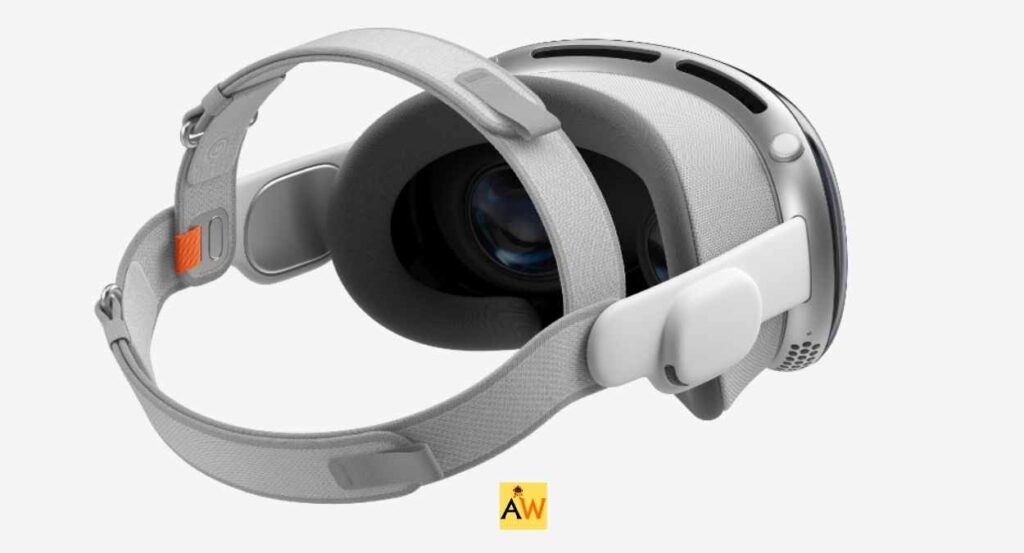AI Gadgets: The Future Is Screen-Free and Voice-Controlled! These AI Devices Want You to Talk, Not Tap
The year 2024 has ushered in a new era of consumer electronics, introducing groundbreaking devices that aim to redefine our relationship with screens. Tech giants like Apple and Samsung, along with innovative startups like Rabbit and Humane AI, have unveiled cutting-edge AI gadgets that challenge the status quo.
Apple’s Vision Pro mixed reality headset and Samsung’s Galaxy Ring wellness tracker are designed to extend our digital experiences beyond traditional screens. Meanwhile, the Rabbit R1 and Humane AI Pin are AI-fueled devices that promise to revolutionize how we interact with technology, relying on voice commands rather than touch screens.

While these gadgets share a common goal of reducing our dependence on screens, they face skepticism due to their high prices, limited app ecosystems, and unproven capabilities. However, they offer a tantalizing glimpse into a future where we spend less time tapping and scrolling on tiny devices, paving the way for more immersive, hands-free, and screen-free interactions with technology.
Apple’s Vision Pro: Extending Apps Beyond Physical Screens
Apple’s long-awaited foray into mixed reality, the Vision Pro, is a game-changer in the world of consumer electronics. Priced at a staggering $3,500, this cutting-edge headset aims to extend apps beyond the confines of physical screens, offering an immersive and expansive digital experience.

The Vision Pro boasts stunning visuals that allow users to create virtual screens of any size and place them anywhere in their environment. This means you can have a FaceTime call or watch a movie on a massive, theater-like display without the limitations of a traditional screen. The headset also supports spatial audio, creating a truly immersive audio-visual experience.

However, the Vision Pro’s high price tag and limited app ecosystem have raised concerns about its accessibility and adoption rate. Apple will need to convince developers to create apps optimized for the headset’s unique capabilities, and consumers will need to see a clear value proposition to justify the hefty investment.
Samsung’s Galaxy Ring: Discreet Wellness Tracking without Screens
Samsung has taken a different approach to reducing screen time with the introduction of the Galaxy Ring, a wellness tracker designed to be worn around the finger. This discreet device aims to monitor various health metrics without the distractions of a miniature display on your wrist.

The Galaxy Ring can track vital signs, sleep patterns, and physical activity, providing users with valuable insights into their overall well-being. By eliminating the need for a traditional screen, Samsung hopes to create a more seamless and less intrusive wellness experience.
While the concept of a smart ring is not entirely new, with companies like Oura already in the market, Samsung’s brand recognition and marketing muscle could help propel this form factor into the mainstream. However, the success of the Galaxy Ring will depend on its accuracy, battery life, and the quality of insights it offers compared to traditional wearables.
Humane AI Pin and Rabbit R1: AI Companions for a Screen-Free Future
Two startups, Humane AI and Rabbit, have taken a bold step towards a screen-free future with their AI-powered gadgets, the Humane AI Pin and the Rabbit R1, respectively. These devices aim to prove that you don’t need to open apps or interact with screens to get things done quickly.

The Humane AI Pin is a tiny wearable AI device that can project text and images onto your hands using laser projection. This innovative approach allows for a visual interface when needed, without relying on a traditional screen. However, the Pin’s steep $700 price tag and inconsistent voice assistant performance have raised concerns about its practicality and user experience.
On the other hand, the $199 Rabbit R1 is a portable AI assistant with a small screen and a retro-inspired design. While the R1’s natural language capabilities can make it fun to use, its limited app integrations and unreliable performance have yet to provide a compelling reason to ditch your smartphone.

Both the Humane AI Pin and the Rabbit R1 are intriguing concepts, but they currently feel more like proofs of concept than fully-fledged products ready for mainstream adoption. Their success will depend on continuous improvements in AI capabilities, app integration, and overall user experience.
The Potential of a Screen-Free Future: Balancing Convenience and Privacy
While these AI gadgets present exciting possibilities for a screen-free future, they also raise important questions about convenience, privacy, and our relationship with technology.
On the one hand, a world where we can accomplish tasks without constantly reaching for our phones or being tethered to screens could lead to increased productivity, better work-life balance, and a reduced risk of digital addiction. Imagine being able to book a vacation, order food, or manage your schedule simply by speaking to an AI assistant, without the need to navigate multiple apps.

However, this level of hands-free convenience also raises concerns about privacy and data security. As we entrust more of our personal information and tasks to AI-powered devices, it becomes increasingly important to ensure that these systems are secure, transparent, and respect user privacy.
Additionally, the shift towards screen-free interactions could potentially exacerbate the digital divide, as these advanced gadgets may be out of reach for many due to their high costs and technological complexities.
The Road Ahead: Challenges and Opportunities
While the current crop of AI gadgets may not yet provide a superior experience to smartphones, they represent an important step towards a future where our interactions with technology evolve beyond traditional screens.

As these devices continue to improve and become more affordable, they could pave the way for a new era of seamless, hands-free interactions with technology. Imagine a world where your smart home, car, and personal AI assistant work in harmony, anticipating your needs and responding to your voice commands without the need for constant screen interactions.
However, this transition will not be without its challenges. Tech companies will need to address concerns around privacy, data security, and accessibility, while also fostering a thriving app ecosystem that takes advantage of these new interaction paradigms.
Ultimately, the success of these AI gadgets and the screen-free future they envision will depend on their ability to provide a truly compelling and convenient experience that enhances our daily lives without sacrificing privacy or security.

Frequently Asked Questions (FAQs)
Q. What is the Apple Vision Pro, and how does it differ from traditional screens?
A. The Apple Vision Pro is a mixed reality headset that aims to extend apps beyond physical screens, creating virtual screens of any size and placing them in your environment. It offers an immersive audio-visual experience, allowing you to have FaceTime calls or watch movies on massive, theater-like displays.
Q. How does the Samsung Galaxy Ring track wellness without a screen?
A. The Samsung Galaxy Ring is a wearable wellness tracker designed to be worn around the finger. It can monitor various health metrics, such as vital signs, sleep patterns, and physical activity, without the distractions and visual stimuli of a traditional wearable display.
Q. How does the Humane AI Pin work, and what makes it different?
A. The Humane AI Pin is a tiny wearable AI device that can project text and images onto your hands using laser projection. This innovative approach allows for a visual interface when needed, without relying on a traditional screen. The Pin also features voice control, enabling hands-free interactions with the AI assistant.
Q. What is the purpose of the Rabbit R1, and how does it differ from a smartphone?
A. The Rabbit R1 is a portable AI assistant designed to provide a screen-free experience. Instead of opening apps, users can interact with the R1 through voice commands to accomplish tasks like ordering food, booking rides, or controlling smart home devices. While it has a small screen, the primary interaction is meant to be through natural language processing.
Q. What are the potential benefits of a screen-free future?
A. A screen-free future promises increased productivity, better work-life balance, and a reduced risk of digital addiction by minimizing the need to constantly interact with screens and apps. It could also lead to more immersive and hands-free experiences, allowing us to accomplish tasks through voice commands or ambient computing.
Q. What are the concerns and challenges associated with these AI gadgets?
A. Some of the main concerns include privacy and data security, as these devices require users to entrust personal information and tasks to AI systems. Additionally, the high costs and technological complexities of these gadgets could exacerbate the digital divide. Developing a thriving app ecosystem and ensuring user trust are also significant challenges.

Conclusion
The introduction of new AI gadgets like Apple’s Vision Pro, Samsung’s Galaxy Ring, Humane AI Pin, and Rabbit R1 represents a significant milestone in our quest to move beyond the confines of traditional screens. While these devices have their limitations and face skepticism, they offer a tantalizing glimpse into a future where our interactions with technology become more seamless, hands-free, and immersive.
As we embark on this journey towards a screen-free future, it is crucial to strike the right balance between convenience and privacy, ensuring that these advanced technologies enhance our lives without compromising our personal data or security. Tech companies must also work to make these devices more accessible and affordable, fostering a thriving ecosystem that caters to diverse user needs.
Ultimately, the success of these AI gadgets will depend on their ability to provide a truly compelling experience that transcends the limitations of traditional screens, empowering us to interact with technology in more natural and intuitive ways. As we navigate this exciting new frontier, it is up to us to shape the future we envision, one where technology seamlessly integrates into our lives, enhancing our productivity, well-being, and overall quality of life.
Also Read:
AI vs Human Intelligence: Exploring the Boundaries
AI Scamming: The Next Frontier of Fraud – Warren Buffett’s Ominous Warning
Microsoft Turbocharges Southeast Asia’s AI Journey with Massive Investments
How To Take Your Business To The Next Level With Your Secret Weapon- Generative AI
Revolutionizing Mobile AI: iPhone 16’s Game-Changing On-Device Generative AI
Uncovering the Truth: Deepfake Videos of Bollywood Stars Fuel Concerns in India’s Elections
Meta AI Chatbot Rolls Out on Instagram, WhatsApp & Messenger – The New Era Begins!
Google Drops Explosive AI Bombs at Cloud Next 24 – Prepare to Be Amazed
Emerging AI Investment: Fund Managers Bet Big on Untapped Potential
Will Google Start Charging For AI Powered Search Features In 2024?
Microsoft & OpenAI’s $100B Stargate AI Supercomputer: How This Supercomputer Will Change Everything?








